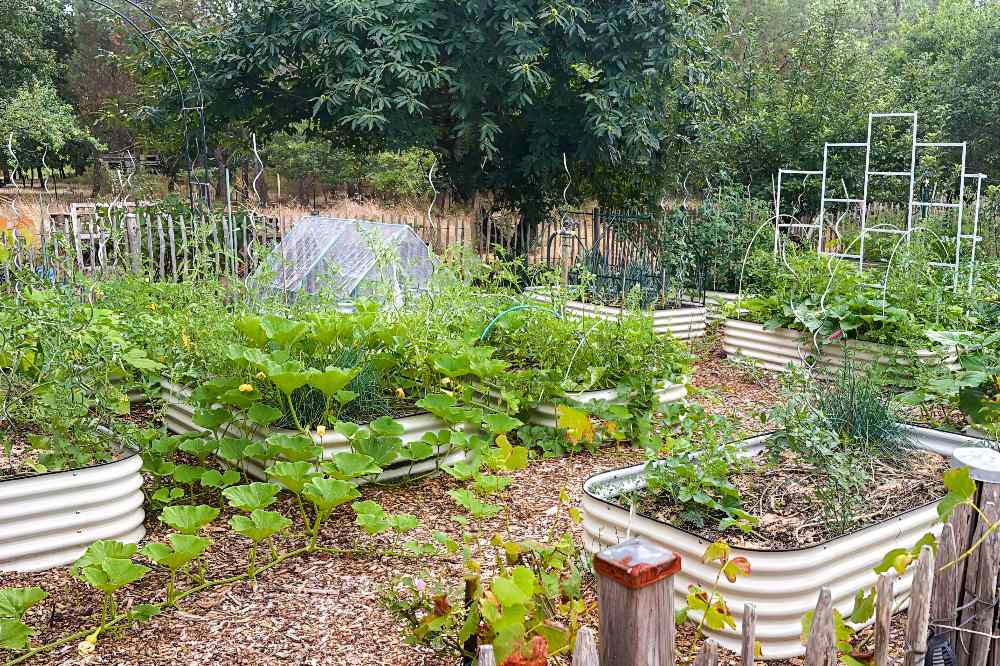What to Plant in September
As the heat of summer fades and the winds of fall begin to blow quietly, September provides an ideal opportunity for your garden to embrace the change of seasons. This transitional month is ideal for planting a variety of cool-season vegetables, herbs, and flowers, preparing your garden for the fall and winter ahead. Find out what crops you can plant in September to extend your growing season and make the most of fall's potential.

If you're located in a warm climate zone, September is a good month to plant some heat-tolerant or late-season crops such as spinach, lettuce, carrots, and some root vegetables. These crops can be grown in the fall and harvested in the winter or early spring.
However, if you are in a cold climate zone, the weather gets progressively colder in September, which may limit the growth of some crops. It is recommended to sow fast-growing fall crops such as spinach and winter vegetables. There is also the option of raising seedlings indoors ahead of time and transplanting them when outdoor temperatures are suitable.

Indoor Seedling Trays vs. Direct Sowing in Raised Beds
Indoor seedling trays provide a controlled environment that helps with germination and initial growth, especially as the weather cools. This method allows growth to begin in a warm environment, avoiding the effects of cold temperatures outside on the seedlings. When choosing seedling trays, the top recommendation is a silicone seed starting trays that is durable, easy to clean, and reduces root damage.
Of course, for some hardy crops such as spinach, kale, carrots, and beets, direct sowing in raised garden beds can be more convenient. Installing raised bed covers can provide double protection for fall planting.
What to Plant in September
Warmer Zones: USDA Plant Hardiness Zones 7-10
- Broccoli: Suitable for fall planting and will continue to grow in warm climates.
- Bell Peppers: Sweet peppers that continue to grow in late fall and have a sweet flavor.
- Tomatoes: Tomatoes are good for fall planting in warm climates and will continue to grow and produce a good crop.
- Green Beans: Easy to grow and manage, green beans continue to grow in the fall in warm climates.
- Pumpkins: Fall-grown pumpkins for warm climates.
- Sweet Corn: Fall planting for warm climates.
- Cucumber: Fall grown cucumbers continue to grow in warm climates.
- Kale: Fall-planted in warm climates is heat-resistant and nutritious.
- Lettuce: For fall planting in warm climates for fast growth.
- Beetroot: Fall planted for continued growth in warm climates with sweet roots.

Cooler Zones: USDA Plant Hardiness Zones 3-6
- Spinach: Cold-hardy, fast-growing leafy green vegetable for fall and winter.
- Kale: Cold hardy and able to continue growing in cold temperatures.
- Carrot: Cold hardy. Can be planted in the fall and harvested when soil temperatures are suitable.
- Swiss Chard: Leaves are hardy and will continue to grow after planting in the fall.
- Radish: Fast growing root vegetable for fall planting. Cold hardy with a short growing cycle.
- Beetroot: Roots and leaves are edible, hardy, and fall planting helps with harvest in early spring.
- Brussels Sprouts: Cold hardy, harvested in fall and winter for better flavor.
- Cauliflower: Fall-grown cauliflower performs best in cold weather and has a sweeter flavor.
- Rosemary: Hardy evergreen herb for fall planting.
- Mint: Fall-grown mint stays green in cold climates.
September flower of the month

- Marigold: Marigolds come in a variety of flower colors including white, yellow, red, and purple. Cold hardy, blooms continuously from fall until frost.
- Zinnia: Passionflower has brightly colored flowers, commonly red, orange, yellow, pink and purple. Blooms for a long period of time, usually from summer to fall.
- Echinacea: Echinacea has purple or pink petals with orange cone-shaped centers. Flowering lasts from summer to fall.
- Begonia: begonias come in a variety of flower colors such as red, pink, white and orange. The flowers are large and bright and are suitable for both indoor and outdoor growing.
To summarize, for some September flowers, marigolds and echinacea are perennials, while zinnia and begonias are usually grown as annuals, but certain begonia varieties can be used as perennials under the right conditions (in environments where temperatures are kept above 59°F).
Conclusion
September is an important time of year for gardening enthusiasts, providing excellent opportunities to plant cool-season vegetables and hardy flowers. As temperatures gradually drop, it's a great season to sow crops like spinach, kale, and radishes, which thrive especially well in the crisp fall air. You can extend the growing season for some crops by purchasing metal garden beds in advance of planting, so embrace the change of seasons and make September the start of your journey to abundant harvests and beautiful gardening. Check this article to learn why metal raised bed can extend the growing season.


